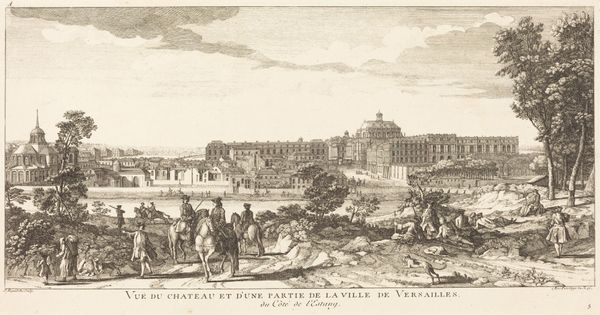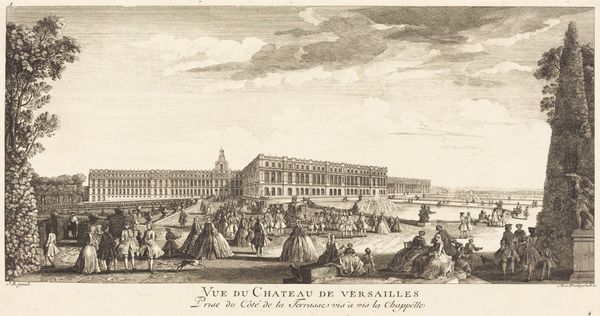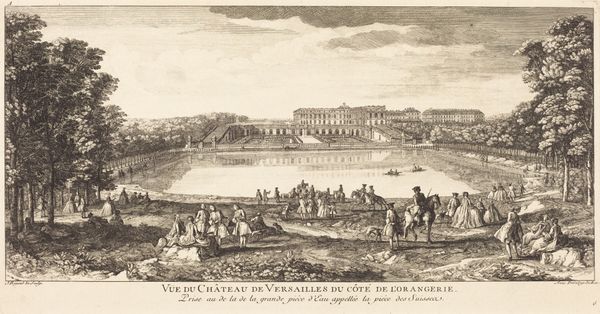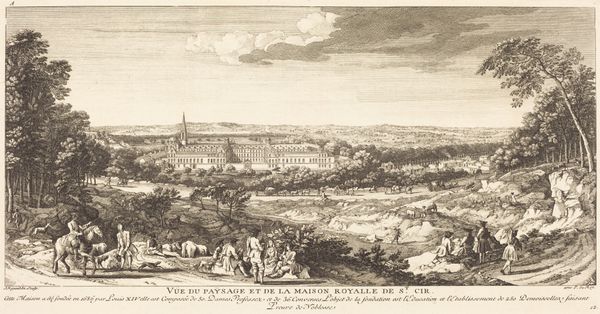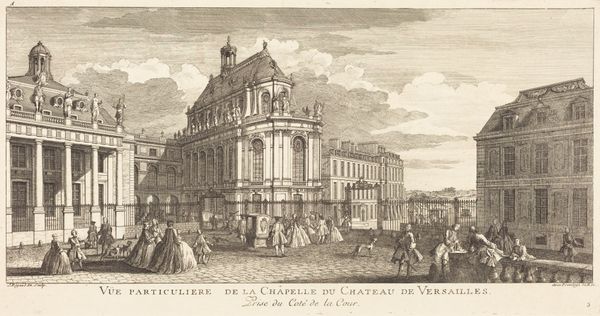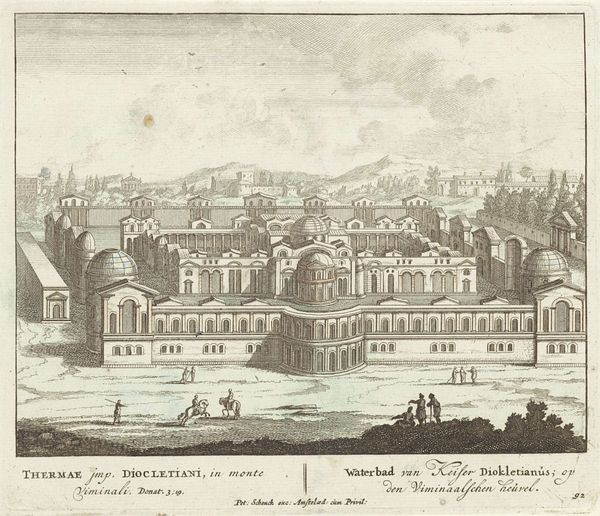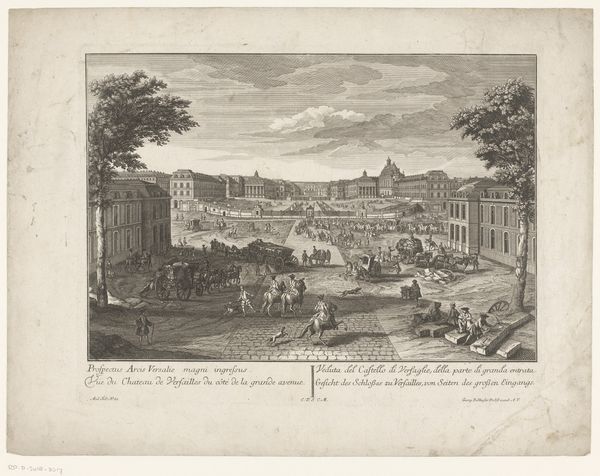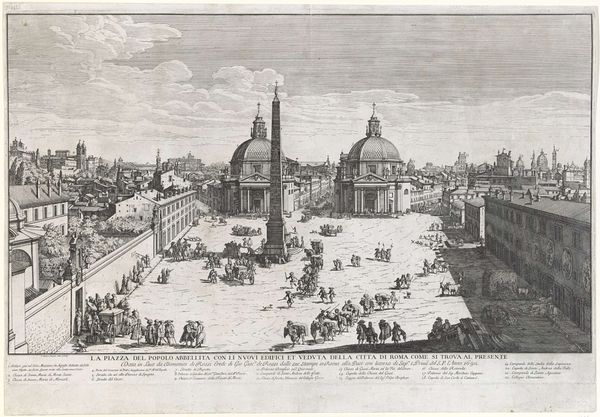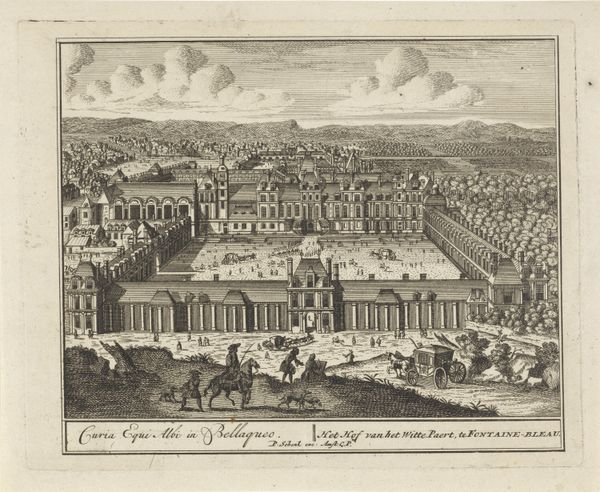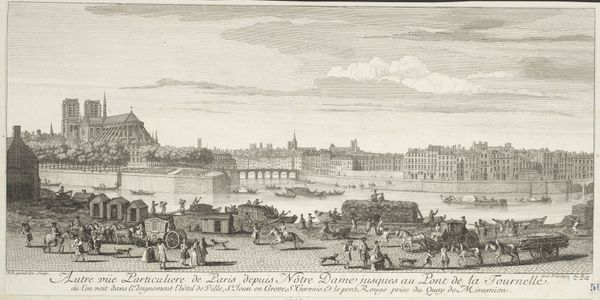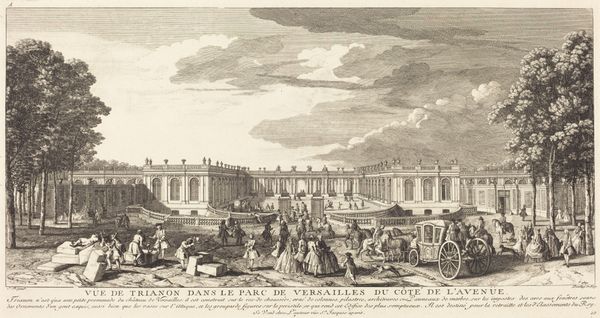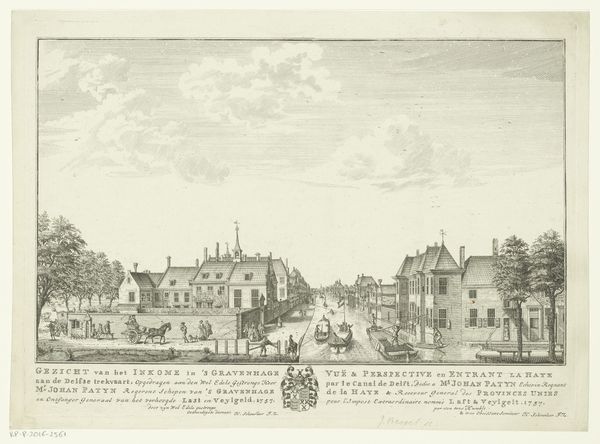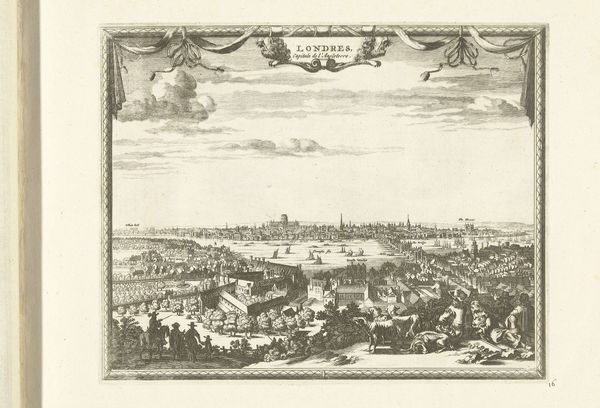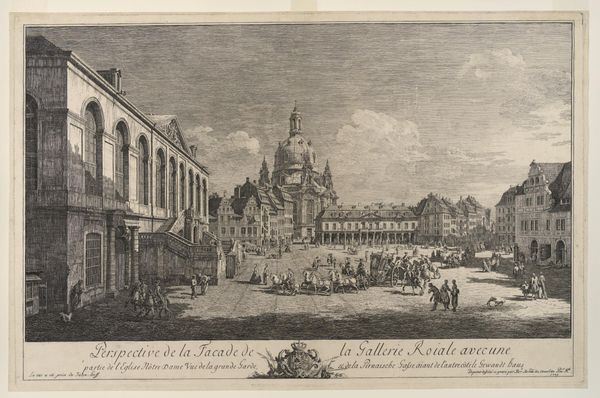
print, engraving
#
baroque
# print
#
landscape
#
perspective
#
cityscape
#
history-painting
#
engraving
Copyright: National Gallery of Art: CC0 1.0
Curator: Before us, we have Jean-Baptiste Rigaud’s engraving titled “Vue Prise de la grande avenue entre les deux Ecuries,” a baroque cityscape focused on Versailles. What are your initial thoughts? Editor: My first impression is the stark contrast. The opulence of Versailles looms in the background, yet the foreground shows signs of construction, manual labor, and what looks like just everyday hustle. The tonal variation is intriguing; almost like wealth and work existing in the same plane. Curator: Precisely. Rigaud has structured the piece masterfully. Notice how the strong lines of perspective converge towards the palace, visually emphasizing its dominance. The baroque style is clear, offering dynamism and grandeur, enhanced by the contrast between the geometrically arranged buildings and the freely sketched trees. Editor: Yes, and I am struck by the details concerning materials. We see evidence of hewn stones, transport, and a real sense of what it would take to both build and support this monument. I’m also intrigued by how Rigaud gives equal visual weight to laborers and nobles alike, seemingly questioning the class system it’s based upon. Curator: Perhaps. The placement certainly elevates the lower classes to be more present within the art’s eye, but also consider how engraving facilitates the democratization of art itself. The print medium creates a possibility for replication and wider dissemination. Editor: Fair enough. But in thinking of wider dissemination, how are these landscapes ultimately functioning? Commemorative perhaps? Instructive? The viewer is placed in a particular point within the scene to showcase that the Château of Versailles can both impress with beauty while simultaneously showcasing control. Curator: Absolutely. This engraving is not merely a representation; it’s a declaration. It shows Versailles as both an architectural triumph and a statement of absolute power, carefully structured and beautifully rendered. Editor: True, seeing the actual materiality helps put its cultural force into perspective. In essence, we see not just the image of power, but the visual equivalent of its material conditions. Curator: I appreciate seeing the various dimensions in tension and dialogue, all working toward an understanding of this artwork, which holds multiple historical, artistic, and cultural considerations within it. Editor: Yes, a layered experience. It's quite easy to look at the aesthetics but important to examine what's going on with material production.
Comments
No comments
Be the first to comment and join the conversation on the ultimate creative platform.
